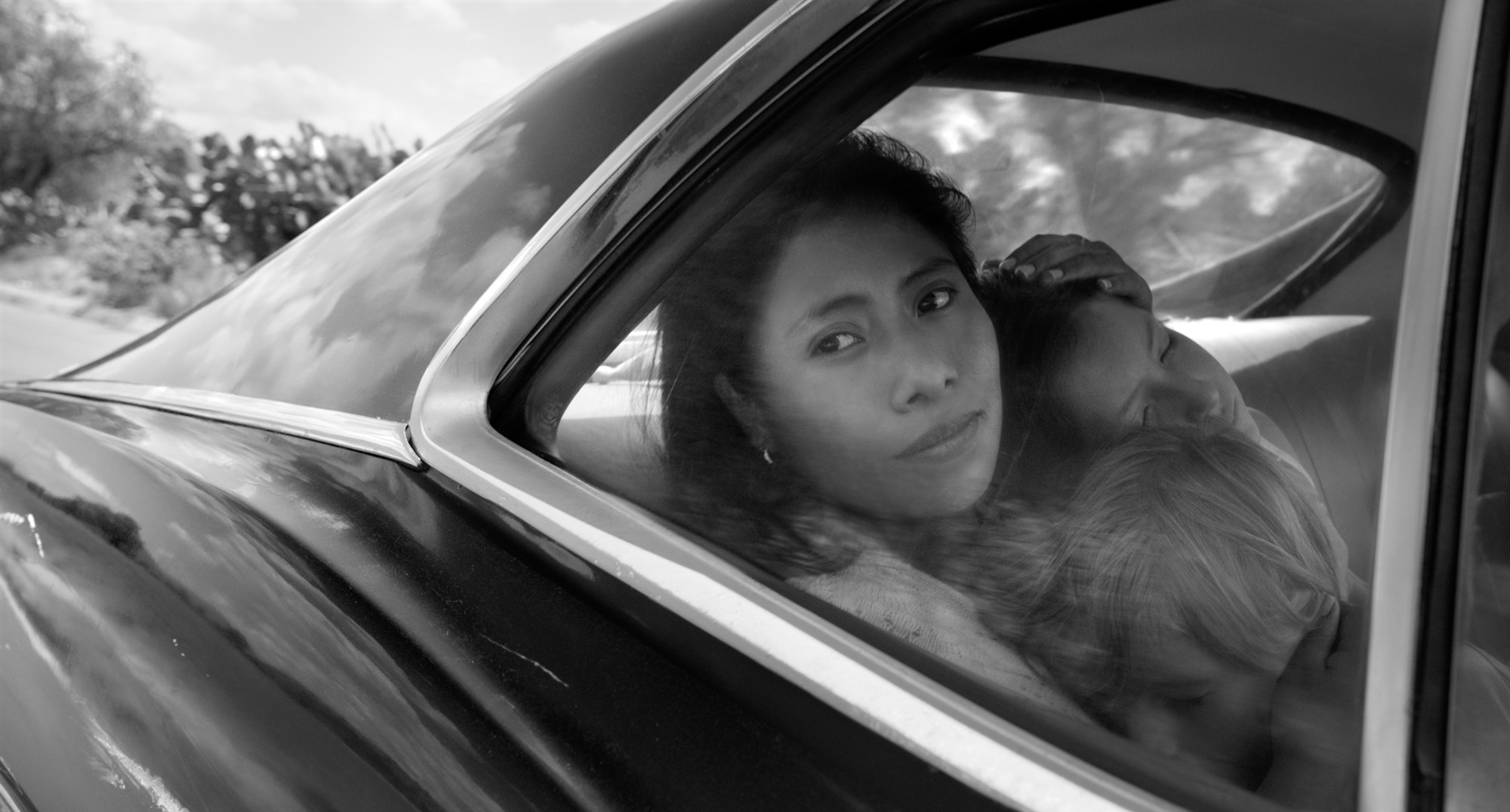Director Alfonso Cuarón’s Roma, hailed as a masterpiece by film critics and nominated for 10 Oscars at this year’s Academy Awards, tells the story of Cleo (played with quiet force by newcomer Yalitza Aparicio, up for Best Actress), the maid and nanny of a family in Mexico City. The film, shot in black and white, follows Cleo with a sympathetic eye as she goes about her often tiring job: sweeping up dog excrement, scrubbing floors, laundering dirty clothes, and tenderly parenting four siblings (a girl and three boys). Her labor-intensive work frequently comes under the critical gaze of the family’s matriarch, Sofía (Marina de Tavira), even though she dutifully caters to the chaotic household’s every imaginable need. It’s a life heavy on drudgery, speckled with sweet moments of genuine love for her rowdy quartet of charges.
Spoiler alert: This analysis reveals key plot points.
With the family cook, Adela (Nancy García García), Cleo lives in a cramped apartment attached to the family’s two-story home. Their relationship provides a glimpse into Cleo’s personal life. We soon learn that she is dating Adela’s cousin, a seemingly sweet (albeit quirky) guy named Fermín (Jorge Antonio Guerrero), but when she reveals she’s pregnant on a date at a movie theater, he goes to the bathroom and never returns. Thus commences a personal journey that foregrounds Cleo’s grace and strength amidst incredibly challenging and stressful circumstances.
She returns to the Oaxacan town from which she and Adela descend to confront Fermín, who promises to kill her and their unborn child if she doesn’t leave him alone. After she returns to Mexico City, she adeptly continues to manage her many exhausting tasks even in the latest stages of her pregnancy.
Toward her due date, Sofía’s mother, Teresa (Verónica García) takes Cleo shopping for a crib. On the street, state armed forces start spraying gunfire on hundreds of student protesters (historically, known as the Corpus Christi Massacre of 1971) and Cleo’s water breaks, but she can’t get through the madness on the streets to deliver her baby for two hours. In the most heart-wrenching scene in the movie, Cleo delivers a dead baby girl. And she goes on to carry the stress and trauma of that tragedy, visible in her every movement, as she tries to return to normalcy.
Sofía, whose marriage crumbles in the background as her husband leaves her (and their four children) for another woman, takes the family, including Cleo, to a seaside town to heal. There, on a isolated beach on an overcast day, her courage is put to the test. Cleo, who doesn’t know how to swim, braves the tempestuous waters to rescue two of the children who’ve been carried out to sea. The ocean, a symbol of renewal and change, takes on a baptismal quality as Cleo is continually dunked beneath the waves and resurfaces while she bravely moves toward her charges. While she successfully pulls them to shore, you get the sense that she’s saved herself, too.
Through Cuarón’s lens, it’s not this obvious demonstration of heroism that renders Cleo heroic — it’s the graceful way she endures a poverty of options in life, an often arduous job, and for surviving under the weight of a devastating loss. She’s an unlikely hero, but one who embodies an everyday grit and equanimity that not all of us have.
Follow us here and subscribe here for all the latest news on how you can keep Thriving.
Stay up to date or catch-up on all our podcasts with Arianna Huffington here.


